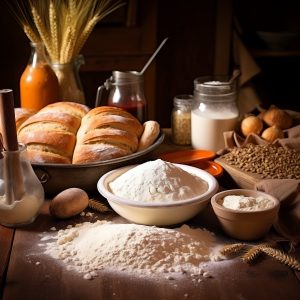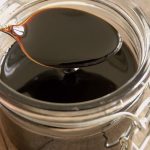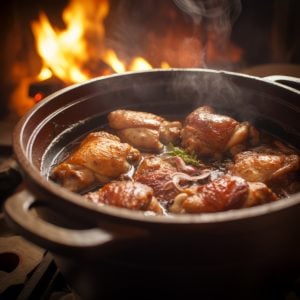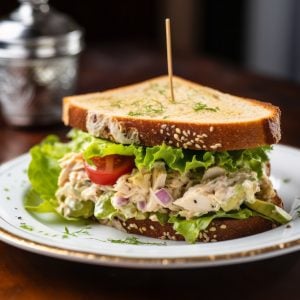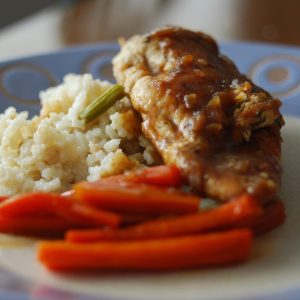I don’t cook duck breasts enough at home, though I love duck. I’ve always found it tricky to cook just right, and then there’s all the fat that renders from cooking it.
As a result, I usually satisfy my duck cravings when dining out. However, I’m learning that I don’t have to do this. I can buy duck breasts and use them in various ways when cooking at home.
This post is about buying and cooking duck breasts. If you enjoy duck as much as I do, I hope you find something useful here. Please let me know your thoughts in the comments below.
What Is Duck Breast?
A duck breast comes from the breast of a duck. It’s a lean, flavorful cut of meat, often considered a delicacy. It typically comes with the skin on, which helps keep the meat moist while cooking. You usually cook the breast skin-side down to render the fat and crisp the skin.
It has a rich, gamey flavor that’s slightly sweeter than chicken or turkey. Its texture is similar to beef’s but leaner and more delicate. It’s considered red meat and is best cooked medium-rare or medium to retain its moisture.
You can prepare them in various ways, including searing, roasting, grilling, or pan-frying. When searing, cook the breast in a hot pan with the skin side down until the fat renders and the skin crisps, then flip it to cook to your desired temperature. Roasting is another great option, as it cooks the breast evenly. Grilling gives the duck a smoky flavor.
They pair well with accompaniments like fruit-based sauces, berry reductions, or sweet and tangy glazes. It also goes nicely with roasted vegetables, potatoes, or salad.
Considered a delicacy, duck breast is rich and flavorful, versatile enough to pair with a variety of seasonings, flavors, and sides. To enjoy its rich, gamey flavor, make sure to cook it correctly to preserve its moisture.
What Is the Most Popular Duck to Cook?
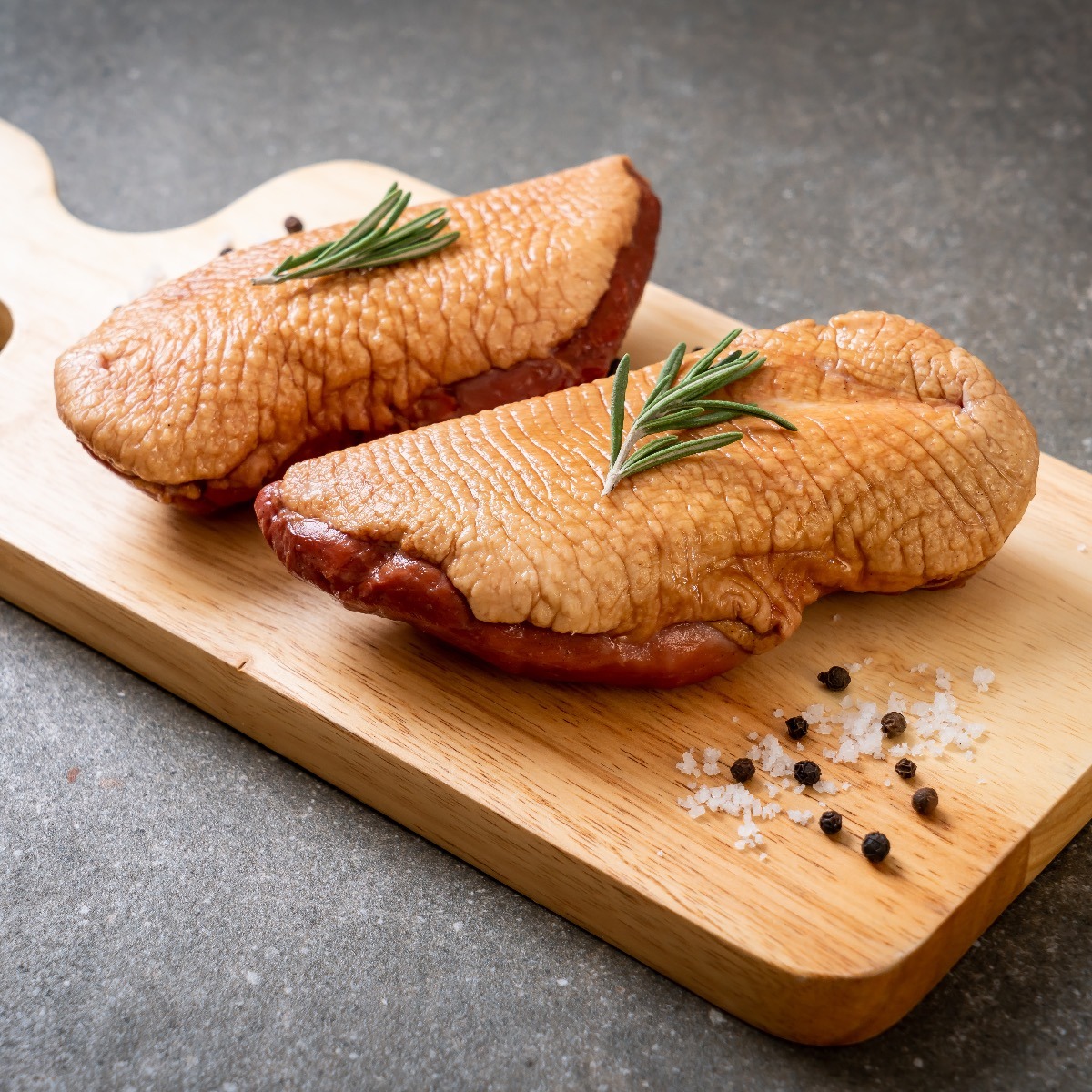
The most popular duck to cook is the domestic Pekin duck, also known as Long Island duckling. This breed is primarily used for egg and meat production.
Pekin ducks are the most common duck breed in the United States and serve as the industry standard for duck meat. They are known for their mild flavor and tender meat, making them ideal for dishes like Peking duck, roast duck, and confit.
What to Look for When Buying Duck Breasts
When buying duck breasts, consider the following to ensure you’re getting high-quality meat:
- Color: The skin should be a rich, deep red, and the meat should appear pink and moist. Avoid duck breasts with pale or grayish coloring, as this may indicate the meat is old or has been frozen too long.
- Fat content: Look for moderate fat on the skin, which will help keep the meat moist and flavorful as it cooks. The fat will melt and baste the meat during cooking.
- Size: Duck breasts come in different sizes, so choose the right size for your recipe or serving needs.
- Smell: Duck breasts should have a fresh, clean scent. Avoid any with off odors.
- Firmness: The flesh should feel firm to the touch, without discoloration or bruising.
- Sustainability: Choose duck breasts labeled as sustainably raised, ensuring the ducks were raised in an environmentally friendly way, with good welfare standards and no antibiotics.
- Organic: For an organic option, look for duck breasts labeled as organic, meaning the ducks were raised without synthetic pesticides or fertilizers.

Should You Wash Duck Breasts Before Cooking?
Washing duck breasts before cooking is not recommended. Washing poultry or any meats can spread bacteria and increase the risk of cross-contamination, heightening the chance of foodborne illness.
The USDA advises against washing meat and poultry. Washing these items can spread bacteria from the surface to sinks, countertops, and other food preparation areas.
Instead of washing duck breasts, handle them safely by keeping them separate from other foods. Use separate cutting boards, utensils, and dishes when preparing the duck. Be sure to thoroughly clean any surfaces that come into contact with raw ducks before using them again.
Cook duck breasts to an internal temperature of 165°F (74°C) to kill any bacteria that may be present.
Why Do You Score the Crosshatch Pattern Before Cooking?
Scoring the skin of duck breasts in a crosshatch pattern before cooking offers several benefits:
- It helps render out the fat more easily, resulting in a crispier skin and a more flavorful final product.
- Scoring prevents the duck breast from curling up during cooking, promoting even cooking.
- It allows the seasoning to penetrate the skin and meat, enhancing the flavor.
- Scoring also prevents the skin from puffing up while cooking, helping to achieve a crispy texture.
Be sure not to cut too deep into the flesh. A shallow score, about 1/8 inch, is sufficient.
Remember that the skin is typically not eaten and is high in saturated fat, so it’s usually removed before eating. However, the rendered fat can be used in other dishes or for cooking.
What Type of Pan Is Best for Cooking Duck Breasts?
Use a heavy-bottomed pan, like a cast iron skillet or a stainless steel pan, for cooking duck breasts. These pans distribute heat evenly, helping to avoid hot spots and ensuring even cooking.
A cast iron skillet can be preheated in the oven, which helps achieve a crisp skin on the duck breasts.
Choose a pan large enough to avoid overcrowding the duck breasts, as overcrowding can lead to steaming instead of searing, which prevents the skin from becoming crispy.
Avoid non-stick pans for cooking duck breasts. The high heat required to sear the breasts can release harmful chemicals from the non-stick coating, and the skin may not crisp up properly.
Are They Nutritious?
Duck breast is a nutritious food, rich in protein and iron. A 3.5-ounce (100-gram) serving contains:
- 121 calories
- 26 grams of protein
- 2.6 grams of iron
- 2.9 grams of saturated fat
Duck breast also provides essential nutrients like B vitamins, zinc, selenium, and phosphorus.
However, it is relatively high in saturated fat compared to other meats like chicken or turkey. Therefore, enjoy duck breast in moderation as part of a balanced diet.
Consider how you prepare duck breast, as some methods can add more fat and calories. For example, leaving the skin on during cooking can significantly increase the fat content of the dish.
Other Ways to Cook Duck Breast
Depending on your preference, you can grill, roast, or poach duck breasts. Always cook duck breasts to an internal temperature of 165°F (74°C) to ensure they are safe to eat.
Here are some tips for cooking duck breast:
- Remove the skin before eating, as it will have rendered the fat but is too fatty to enjoy.
- Let the meat rest for a few minutes before slicing to allow the juices to redistribute, making the meat more tender and juicy.
- Slice the duck breast against the grain when serving to ensure tenderness.
Preparing duck breast is simple. Score the skin, season the meat, and cook it in a skillet, grill, oven, or by poaching. Remove the skin before eating, rest the meat before slicing, and cut against the grain for tenderness.
Can You Overcook It?
Eating the fat on duck breast is a personal choice. Some people enjoy it for added flavor and moisture, while others avoid it due to its high saturated fat content, which can contribute to heart disease when consumed in excess.
If you choose to eat the fat, trim any excess fat before cooking and remove the skin before eating to reduce the total fat content.
Alternatively, you can cook the duck breast with the skin on, then remove the skin before eating. This method renders the fat and crisps the skin without adding extra fat to your meal.
Consider the cooking method, as some preparations add more fat and calories. For example, breading and deep-frying the duck breast will add more fat and calories compared to pan-searing or grilling it.
Pan Seared Duck Breasts
Ingredients
- 2 duck breasts
- salt and pepper to taste
- 1 tablespoon vegetable oil
- herbs or spices of your choice optional
Instructions
- Begin by patting the duck breasts dry with paper towels. Then, score the skin in a crosshatch pattern, careful not to cut too deep into the flesh.
- Season the duck breasts with salt and pepper on both sides.
- Heat a large skillet over medium-high heat and add the vegetable oil. Once the oil is hot, place the duck breasts in the skillet, skin-side down.
- Cook the duck breasts for 5-7 minutes or until the skin is golden brown and crispy. Then, turn the breasts over and cook for an additional 2-4 minutes for medium-rare or longer for more well-done.
- Once the duck breasts are cooked to your liking, remove them from the skillet and let them rest for 5-10 minutes before slicing.
- Slice the duck breast against the grain and serve.
Notes
What Does Cooked Duck Breast Taste Like?
Cooked duck breast has a rich, slightly gamey flavor, often compared to beef. It’s stronger than chicken but milder than goose.
Duck breast is leaner than chicken but contains more fat than other poultry, giving it a richer taste and tender texture. The fat helps keep the meat moist during cooking, so even if it’s cooked longer, it stays juicy.
The crispy skin adds a contrast in texture and depth of flavor. When cooked properly, duck breast should have a slightly pink center, balancing the rich, meaty taste.
Do You Eat the Fat on Duck Breast?
The decision to eat the fat on duck breast is personal. Some enjoy it for added flavor and moisture, while others avoid it due to its high saturated fat content.
If you opt to eat the fat, trim excess fat before cooking and remove the skin before eating. Alternatively, cook the duck breast with the skin on, then remove it before eating to enjoy the crispy skin without extra fat.
Preparation methods also affect the fat and calorie content. For example, breaded and deep-fried duck breast will add more fat than pan-seared or grilled options.
In summary, whether or not to eat the fat on duck breast is a personal choice. Trim any excess fat and consider cooking methods to avoid adding unnecessary fat and calories to your meal.
Popular Sauces to Serve with Duck Breast
Several sauces pair well with duck breast, depending on the desired flavor profile. Here are some popular options:
- Cherry Sauce: Made with fresh or canned cherries, it complements duck’s rich flavor.
- Orange Sauce: Orange juice, zest, sugar, and sometimes Grand Marnier balance duck’s rich taste.
- Port Wine Sauce: Made with port wine, shallots, and broth, it enhances duck’s savory flavor.
- Blueberry Sauce: Fresh or frozen blueberries with sugar and balsamic vinegar add a tangy sweetness.
- Red Wine Sauce: Red wine with broth, shallots, and thyme pairs well with duck’s richness.
- Hoisin Sauce: Sweet, savory, and slightly spicy, it complements bold duck flavors.
- Honey-Mustard Sauce: Honey, mustard, and sometimes soy sauce offer a nice balance with duck breast.
Wines That Go Well with Duck Breasts
Duck breast pairs well with various wines, depending on its preparation and the flavors in the dish. Some popular wine choices include:
- Pinot Noir: A light red wine with fruit and acidity that complements duck’s rich flavor.
- Merlot: A medium-bodied red with soft tannins and fruity taste that pairs well with fruit-based sauces.
- Syrah/Shiraz: Bold and spicy, it matches the gamey flavor of duck and stands up to bold spices.
- Zinfandel: A bold red wine with spicy and fruity notes that pair well with sweet and tangy glazes.
- Riesling: A white wine with good acidity and sweetness that complements fruity glazes.
- Chenin Blanc: A white wine with acidity that pairs well with duck and fruit-based sauces.
- Gewürztraminer: A white wine with floral and spicy aromas that complements duck’s flavors.
Consider the flavors of the sides and sauces when choosing a wine to pair with duck breast for a balanced dining experience.
Good Sources for Purchasing Duck Breasts
You can buy duck breasts from various sources:- Local Farmers’ Markets: Many local markets sell fresh, locally sourced duck breasts, where you can inquire about the raising process.
- Specialty Butcher Shops: These shops offer a selection of duck breeds, such as Pekin, Muscovy, and Moulard, and can provide advice on preparation.
- Online Retailers: Websites like D’Artagnan, Maple Leaf Farms, and Hudson Valley Foie Gras offer a range of duck products, including organic and sustainably raised options.
- Supermarkets: Some supermarkets carry duck breasts, often frozen. Check the labels for sustainable and humane farming practices.
- Local Duck Farmers: You can buy directly from farmers to ensure the ducks were raised sustainably and humanely.
- Restaurants: Many restaurants offer duck dishes and source their ingredients from reputable suppliers.
Pomegranate Glaze
Ingredients
- 1 cup pomegranate juice
- ¼ cup sugar
- 2 tablespoons red wine vinegar
- 1 tablespoon cornstarch
- 1 teaspoon salt
- ¼ teaspoon black pepper
Instructions
- In a small saucepan, combine the pomegranate juice, sugar, red wine vinegar, cornstarch, salt and pepper.
- Cook over medium heat, stirring constantly, until the mixture comes to a boil.
- Reduce the heat to low and continue to stir for another 2-3 minutes, or until the glaze has thickened.
- Remove the saucepan from the heat and let the glaze cool to room temperature.
- The glaze can be used immediately, or stored in an airtight container in the refrigerator for up to 2 weeks.
- You can use this glaze as a finishing sauce for your duck or any other poultry or meat, or as a dip for your appetizers. It can also be used as a salad dressing or a marinade.


